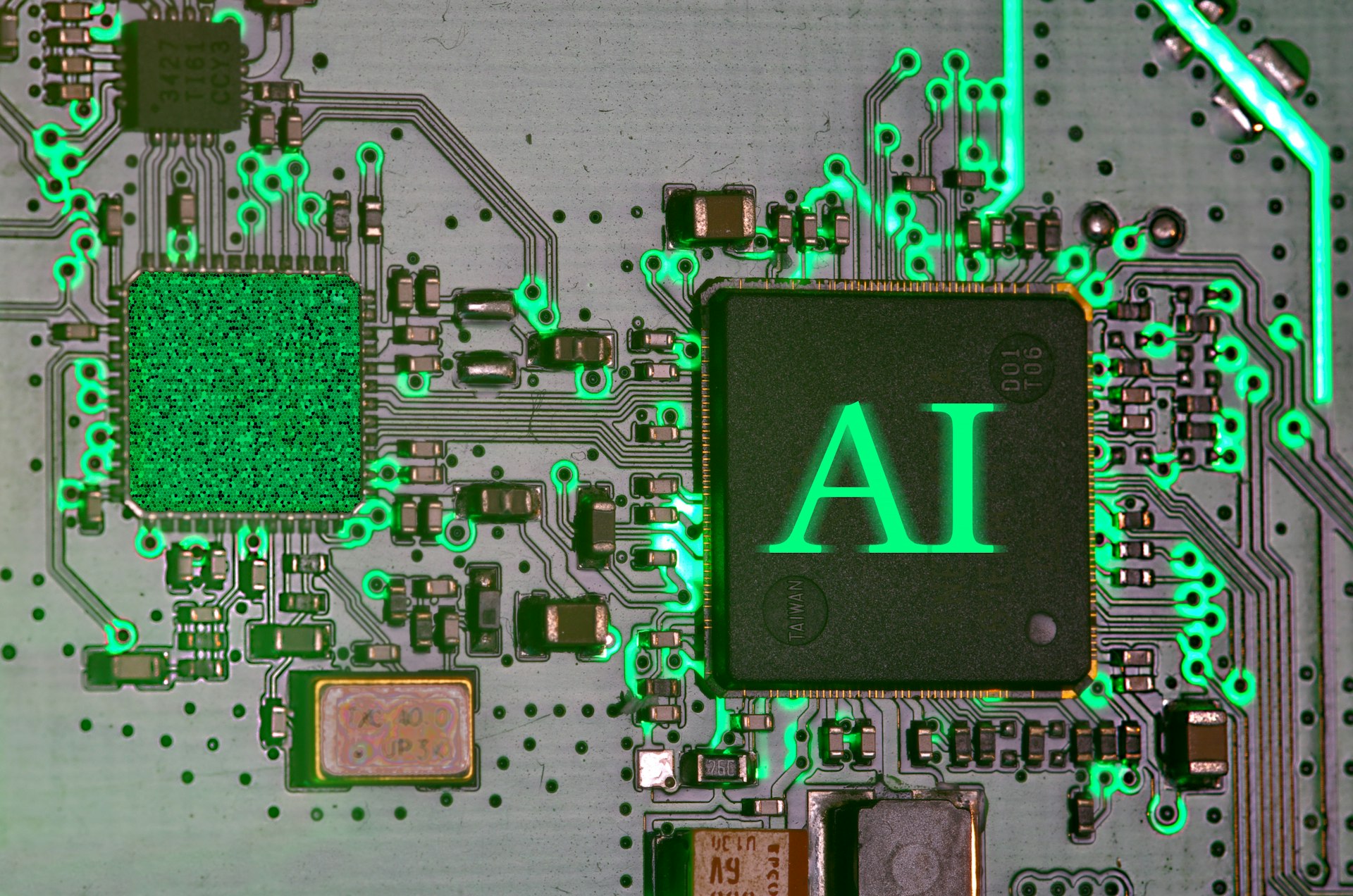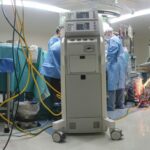Transforming Healthcare: The Future of Artificial Intelligence in Diagnostics


Photo by Immo Wegmann on Unsplash
Introduction: AI’s Transformative Impact on Diagnostics
Artificial intelligence (AI) has evolved from an emerging technology to an essential driver of change in medical diagnostics. In 2025 and beyond, AI systems are not merely supporting physicians-they are increasingly shaping clinical pathways and redefining how diseases are detected, monitored, and managed. This rapid evolution is being fueled by breakthroughs in machine learning, deep learning, and the integration of vast medical datasets, enabling faster, more accurate, and more personalized diagnostics than ever before [1] .
How AI is Reshaping Diagnostic Workflows
AI technology is now embedded in clinical decision-making, from radiology and pathology to chronic disease management. Hospitals and clinics are leveraging AI to improve workflow throughput, minimize diagnostic errors, and optimize patient care. For example, at the University of Cambridge, AI tools can now help pathologists diagnose coeliac disease in seconds, greatly reducing backlogs and accelerating speed to care. Similar technologies are being applied in radiology for rapid image analysis and in pathology for automated slide review [2] .
In New York City, ScopeAI is powering diagnostics for gig economy workers, expanding access to care without requiring traditional appointments. At Penn Medicine, AI is being used to analyze data and uncover care needs for conditions such as long COVID, helping clinicians identify high-risk patients more efficiently. Wearable AI technology now provides real-time clinical decision guidance, shifting care models from reactive to proactive and enabling earlier intervention [2] .

Photo by Possessed Photography on Unsplash
Key Benefits of AI in Diagnostic Medicine
According to international surveys of over 3,700 researchers, AI is expected to have a substantial influence on diagnostic medicine within the next decade. The most commonly anticipated benefits include:
- Enhanced diagnostic reliability: AI algorithms can outperform even experienced physicians on certain complex diagnostic tasks, reducing human error and improving consistency [3] [5] .
- Reduced costs: Automated analysis and streamlined workflows lower the operational costs of screening and testing [3] .
- Improved patient outcomes: Faster and more accurate diagnoses enable timely treatment, which is crucial for many conditions such as cancer, cardiovascular diseases, and rare genetic disorders [4] .
- Reduced physician workload: AI can handle repetitive tasks, freeing clinicians to focus on complex cases and patient interaction [3] .
AI-enabled diagnostic tools are already being used for x-ray interpretation, heart rhythm analysis, and skin cancer detection, with expanding applications expected in the near future [3] .
Real-World Innovations and Case Studies
Several recent breakthroughs illustrate the tangible impact of AI in diagnostics:
1. Portable Cardiac Ultrasound with AI Guidance: In 2025, Esaote Group unveiled the MyLabâ„¢ C30 cardio, a portable ultrasound system with AI-driven tools that reduce exam time and enhance diagnostic confidence. Its HeartScan Assistant provides real-time guidance to clinicians, even those with limited experience, improving image quality and accuracy in emergency settings [4] .
2. AI-Based Genetic Risk Prediction: New AI models can analyze over a million electronic health records to assign risk scores for more than 1,600 rare genetic variants, aiding in the early detection of hereditary diseases and informing personalized prevention strategies [4] .
3. Diagnostic Orchestration: Microsoft’s AI Diagnostic Orchestrator (MAI-DxO) has demonstrated the ability to solve complex diagnostic challenges, correctly diagnosing up to 85% of difficult cases in benchmarking against New England Journal of Medicine records-outperforming experienced physicians fourfold [5] .
Practical Steps for Healthcare Providers and Patients
To access AI-enabled diagnostic services or implement AI tools in your practice, consider the following steps:
- Stay informed about the latest AI diagnostic tools by following reputable medical journals, healthcare conferences, and vendor announcements. Many hospitals and clinics now publish updates on their adoption of AI technologies.
- For healthcare providers, evaluate your existing infrastructure and identify areas where AI could enhance efficiency-such as automating imaging analysis or integrating AI-driven risk scoring for chronic conditions.
- Clinicians should seek training opportunities in AI applications. Professional associations, such as the American Medical Association, may offer educational resources and certification courses on AI in medicine.
- Patients interested in AI-enabled diagnostics can consult their healthcare providers to learn if their hospital or clinic uses AI-based tools. It is increasingly common for major health systems to offer AI-assisted radiology, pathology, and genetic screening.
- When exploring AI diagnostic options, ask about the transparency, accuracy, and regulatory oversight of the tools being used. If you are concerned about data privacy, request information about how your medical data is stored and protected.
For more information about new AI diagnostic solutions, you can search for “AI in medical diagnostics” on websites of leading academic medical centers, healthcare industry news outlets, and official health technology providers. Always ensure you are referencing reputable sources.
Challenges, Risks, and Ethical Considerations
Despite its promise, the future of AI in diagnostics is not without challenges. Common barriers include:
- Integration with clinical workflows: Embedding AI solutions into existing systems can be complex, requiring technical, operational, and cultural adjustments [3] .
- Ethical and regulatory issues: Concerns over algorithmic transparency, potential bias, and the need for robust oversight are growing as AI becomes more central to care [3] .
- Data privacy and security: Large-scale deployment of AI relies on access to big data, raising questions about consent, security, and patient trust.
- Legal responsibility: Determining accountability for AI-supported clinical decisions remains an ongoing debate, especially in cases of misdiagnosis or adverse outcomes.
To address these challenges, many organizations are calling for the development of standardized regulatory frameworks and ethical guidelines. It is recommended that both providers and patients stay updated on evolving best practices by consulting official bodies such as the U.S. Food and Drug Administration (FDA) or the European Medicines Agency (EMA) for approved AI medical devices.
Alternative Approaches and Looking Ahead
While AI is rapidly advancing, alternative or complementary strategies include:
- Hybrid models, where AI provides decision support but human clinicians retain final authority.
- Collaborative networks that share anonymized data to improve AI accuracy while maintaining privacy.
- Open-source AI projects, which can be evaluated and improved by the broader medical community.
As AI adoption grows, expect to see a future where diagnostic medicine is increasingly predictive, personalized, and accessible. Healthcare professionals and organizations that proactively engage with these innovations will be best positioned to deliver high-quality, efficient care. For patients, AI may offer faster diagnoses and more tailored treatment options, but it remains important to discuss any concerns directly with your healthcare team.
References
[1] Scispot (2025). AI Diagnostics: Revolutionizing Medical Diagnosis in 2025.
[2] HIMSS (2025). How AI is Reshaping Clinical Decision-Making in 2025.
[3] JMIR (2025). Future Use of AI in Diagnostic Medicine: 2-Wave Cross-Sectional Survey.
[4] Crescendo AI (2025). AI Breakthroughs in Healthcare and Medical: 2025 News.
[5] Microsoft AI (2025). The Path to Medical Superintelligence.






